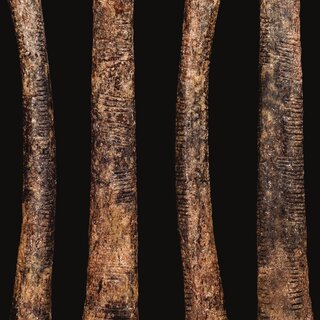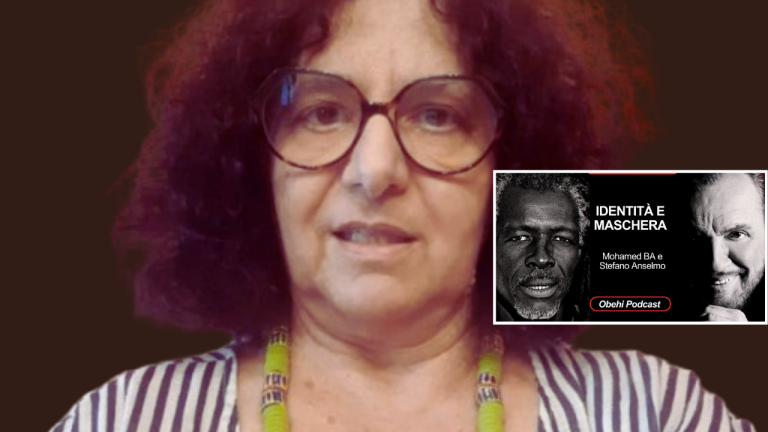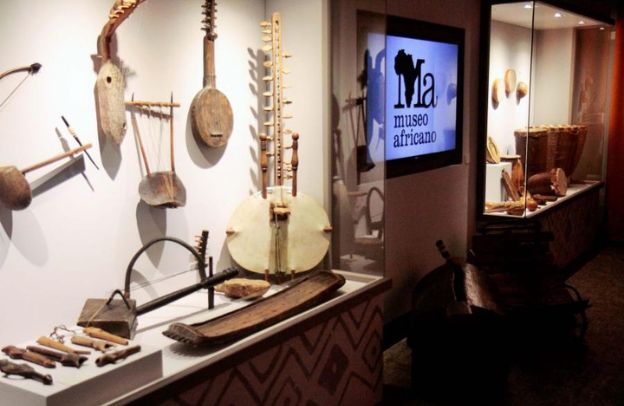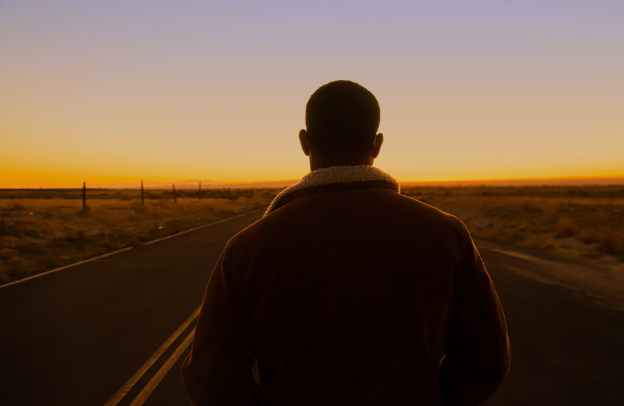The Ishango Bone: Africa’s Ancient Message to Her Children

There is a story buried deep in the soil of the Congo, older than any kingdom, older than the pyramids, older even than the idea of writing itself. It is a story carved not in ink or stone, but in bone, a slender piece of history that whispers across twenty millennia to tell us something profound: Africa was counting, calculating, and thinking long before the rest of the world even had words for numbers. That story belongs to the Ishango Bone.
Learn How to Leverage Your Story through our Story To Asset Framework.
A Bone Unearthed, A Legacy Reawakened
The year was 1950. A Belgian geologist named Jean de Heinzelin de Braucourt was digging along the shores of Lake Edward, near the headwaters of the Nile, in what is now eastern Democratic Republic of Congo. Amid the remains of ancient fish and stone tools, he found something small, just ten centimeters long dark, smooth, and curved like the crescent of a moon.
It was the fibula of a baboon, polished by time and bearing mysterious notches. At first, it seemed ordinary, maybe a tool handle, or a simple tally stick. But when de Heinzelin examined it closely, he saw the notches were not random. They were grouped in deliberate clusters, three columns running the length of the bone.
He didn’t know it then, but he was holding one of the earliest known artifacts of human mathematics, a record of thought older than the written word.
Africa Was Counting Long Before the World Noticed
Today, scientists date the Ishango Bone to roughly 18,000 to 25,000 years ago. To put that in perspective, that’s more than 10,000 years before the first cities of Mesopotamia, the so-called “cradle of civilization.” Yet here, in the heart of Africa, someone had already begun to make sense of numbers.
See also Renate From Brussels to Congo, The Blood Still Cries from the Soil: A journey In Search of the Truth
The bone’s markings appear in patterns: groups of three and six, four and eight, five and ten. On another column, there are clusters of 11, 13, 17, and 19, prime numbers, the building blocks of arithmetic.
If you listen closely to what the Ishango Bone is saying, it might be this: Mathematics, one of humanity’s purest forms of reasoning, began here.
Some researchers believe it could have been a lunar calendar, tracking the phases of the moon, a tool for measuring time, for predicting the rains or the migration of animals. Others see in it a base-10 or base-12 counting system, precursors to the numerical structures that govern our lives today.
A few even suggest it shows knowledge of doubling, halving, and symmetry, concepts that lie at the heart of modern computation.
Whichever interpretation you prefer, one thing is clear: the person who carved the Ishango Bone was thinking abstractly, logically, mathematically.
And they were African.
Reclaiming Africa’s Place in the History of Knowledge
For too long, Africa’s story has been told through the lens of survival, not invention. We’ve been cast as dancers, warriors, storytellers, all true and beautiful, but rarely as mathematicians or scientists. The Ishango Bone shatters that bias.
It forces us to rewrite the story of human intelligence.
When European archaeologists found the Ishango Bone, they debated its meaning, could prehistoric Africans really have understood arithmetic? Could this simple bone really show awareness of prime numbers? Some dismissed it as coincidence, but others, including modern African scholars, saw it for what it was: proof that Africa has always been a cradle of human thought.
Even UNESCO’s World Heritage Astronomy report (2023) recognizes the Ishango site as evidence of early astronomical and mathematical awareness.
New studies from 2024 and 2025 continue to reveal patterns in the notches that suggest deliberate structuring, not random tally marks, but intentional sequences, perhaps even a teaching tool or cosmological reference.
Imagine that: long before the pyramids rose, before Stonehenge or Babylon, someone in Africa sat by the Semliki River and carved meaning into bone, perhaps to teach, perhaps to count, perhaps to tell time. Africa was already measuring the universe.
See also Nsibidi The Leopard’s Code: Peeling Back the Secrets of the Ekoi people of Nigeria
A Mirror for the African Diaspora
For those of us scattered across continents, from the Caribbean to Europe, from the Americas to the Pacific, the Ishango Bone speaks directly to something deep in the soul: the need to know that our roots run into the soil of genius.
We are descendants of people who thought, who recorded, who invented. Our legacy is not just rhythmic or poetic, it is mathematical, philosophical, and scientific.
So, when your child opens a math book and struggles through multiplication tables, remember: the instinct to count, to find pattern, to make sense of the world through number, that is our inheritance. It runs in our blood as surely as rhythm runs through our veins.
Between Stone and Story
The Ishango Bone also sits at a beautiful intersection between science and art, between mathematics and literature. It is, in a way, Africa’s first piece of written knowledge. The marks are not words, but they carry meaning. They are storytelling through patterns.
In many African traditions, knowledge was not only spoken but also carved, painted, woven. From the Adinkra symbols of Ghana to the Nsibidi script of southeastern Nigeria, Africans have long used patterns and marks to encode wisdom. The Ishango Bone stands as the ancestor of those systems, an ancient page in Africa’s unwritten library.
If we think of it that way, the Ishango Bone is not only the first African calculator. It is also Africa’s oldest book.
The Debate and the Dream
Over the decades, scholars have continued to argue about what the Ishango Bone really means. Some see it as evidence of a calendar. Others as a calculator. Still others as a spiritual or symbolic object.
But perhaps the real meaning lies not in any one interpretation, but in what it represents: the human urge to make sense of the world. The marks on the Ishango Bone are a conversation between a human being and the universe, a dialogue about pattern, order, and mystery.
That’s the same dialogue African artists hold when they paint or sculpt; the same one African drummer enters when they beat out complex rhythms that echo through generations. The same mathematicians use when they solve equations. It is, at its heart, the African imagination at work.
The Question of Return
Today, the Ishango Bone rests in the Royal Belgian Institute of Natural Sciences in Brussels. But it was born in Africa, shaped by African hands, carved in African earth. There have been growing calls, including from Congolese cultural institutions, for the bone to be returned home.
See also Africa’s Hidden Literacy: Reclaiming Our Ancient and Modern Writing Systems
It is a small object, yes, but heavy with meaning. Its return would symbolize more than repatriation; it would mean reclaiming our narrative, bringing Africa’s intellectual history back into Africa’s own hands.
Because heritage is not just what we inherit; it is what we remember, reclaim, and reimagine.
From Ishango to Innovation
What does an ancient bone mean to a generation of African-descended scientists, engineers, writers, and thinkers today?
It means we have always been innovators. It means that our genius is ancient, that creativity and intellect are woven into the DNA of our people.
In classrooms across the diaspora, from Lagos to London, Kingston to Atlanta, the Ishango Bone could be more than an archaeological curiosity, it could be a symbol of intellectual continuity. A reminder that Africa has always contributed to humanity’s greatest questions.
When we teach African history, we should not start only with empires or kingdoms. We should start with Ishango, with the moment an African hand carved meaning into bone.
Lessons from a 20,000-Year-Old Teacher
So, what does the Ishango Bone teach us today?
- Africa is not just the cradle of humanity; it is the cradle of intelligence.
- Long before civilization as we know it, Africans were reasoning, experimenting, and recording.
- Knowledge takes many forms.
Writing doesn’t always look like letters on a page. Sometimes, it looks like notches on a bone, or patterns in a drumbeat.
- Reclaiming history is part of healing: The diaspora’s search for identity is not only emotional, it is intellectual. The Ishango Bone reminds us that our ancestors were thinkers, builders, scientists.
- The future is connected to the past: From ancient tally marks to modern algorithms, the human story of mathematics begins with curiosity, the same curiosity that will drive Africa’s next generation of innovators.
A Message Across Time
The Ishango Bone is more than an artifact. It is a message — one that has traveled across 20,000 years of silence to find you.
It says: The Life & Legacy Of Simon Kimbangu (Congolese Religious Leader) With Kiatezua Lubanzadio
“You come from a lineage of brilliance.”
Before there were books or computers, your ancestors were counting the stars.
Before there were kingdoms or colonizers, your people were measuring the rhythm of time.
Before there were numbers, there was Africa, and she was already thinking. So the next time you see a child solving a math problem, or a musician finding patterns in sound, or a scientist exploring the unknown, remember: they are answering a question first asked beside the Semliki River, in the heart of our motherland.
The Ishango Bone still speaks, and if you listen closely, it’s saying,
“Africa, remember who you are.”
Sources include: Royal Belgian Institute of Natural Sciences (2023); UNESCO Astronomy Heritage Report (2023); Baur, J. (2025, arXiv preprint); AfricArxiv (2024); and DRC cultural heritage archives.
Learn How to Leverage Your Story through our Story To Asset Framework.






